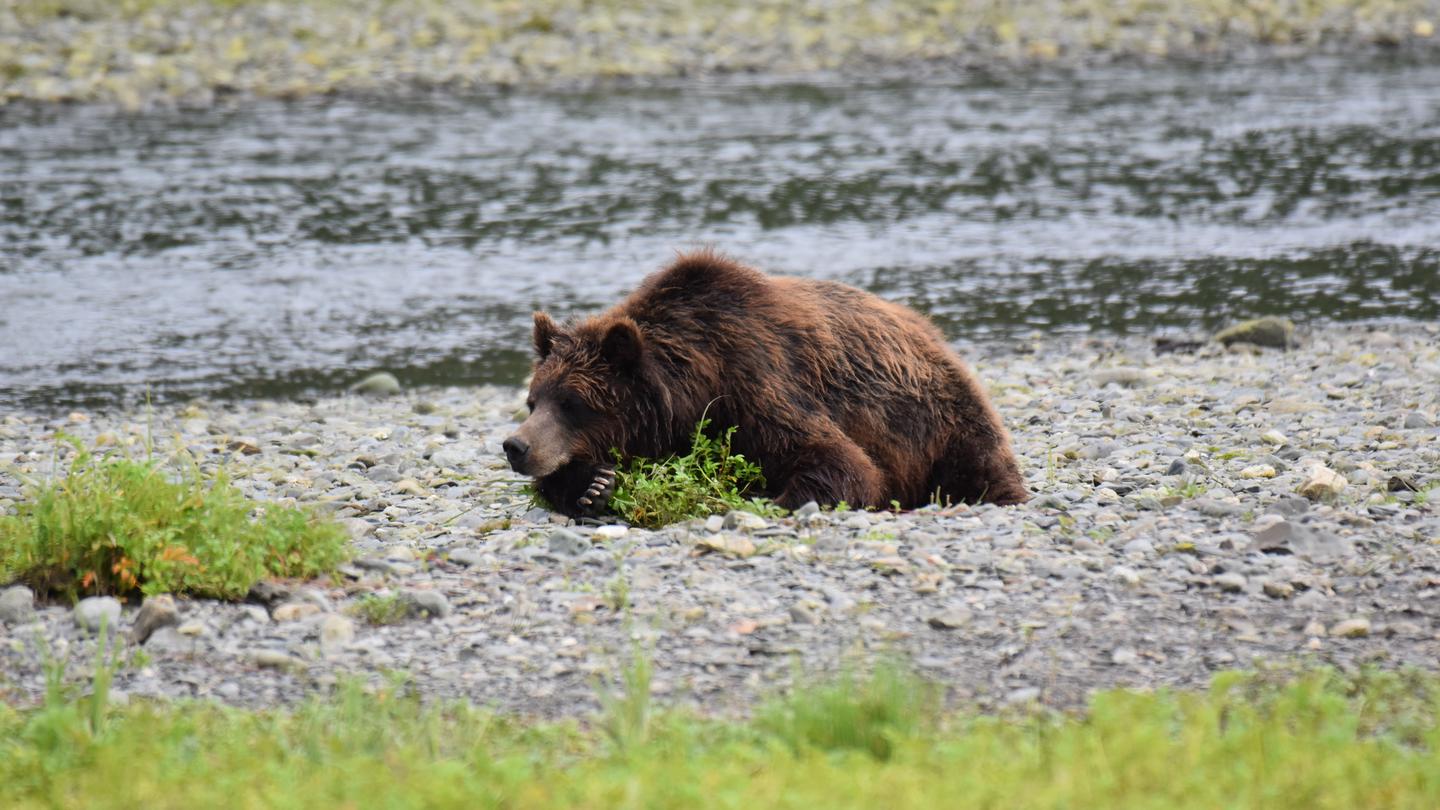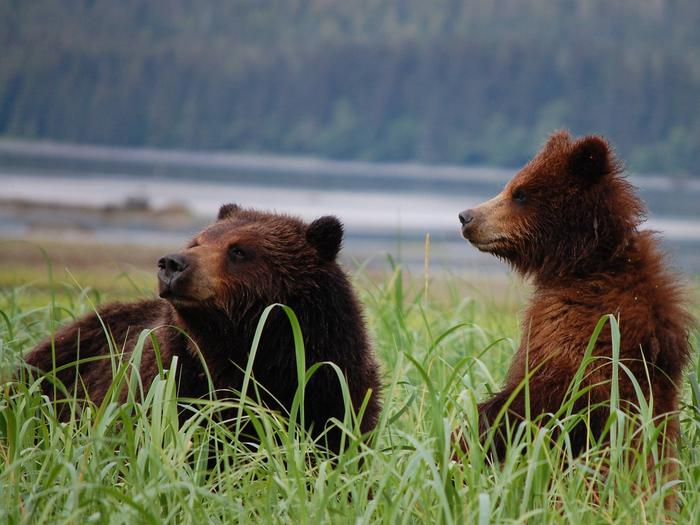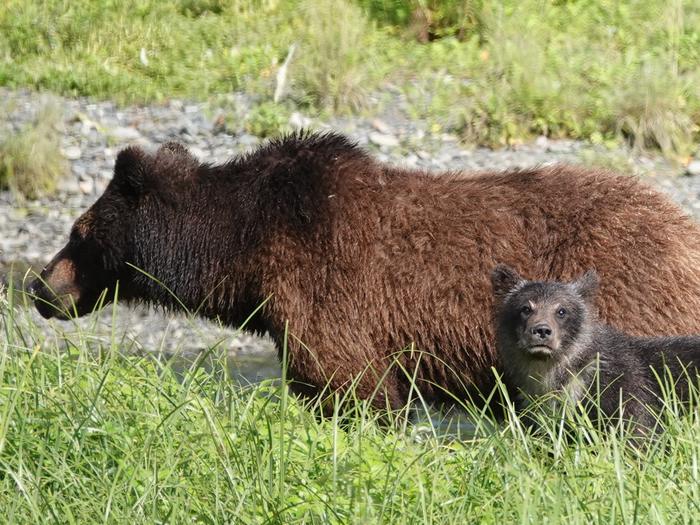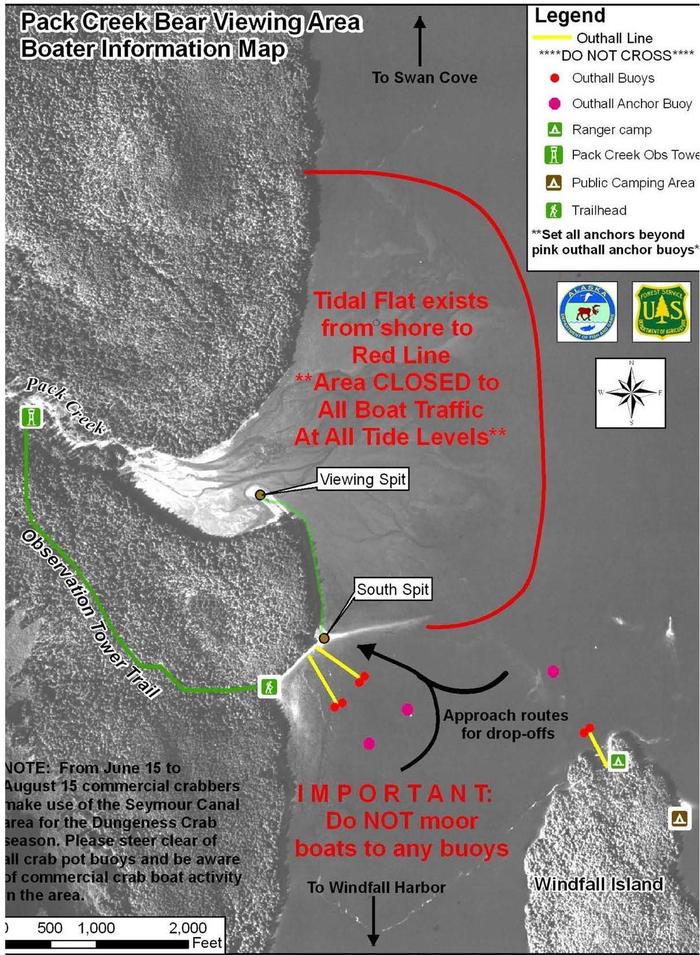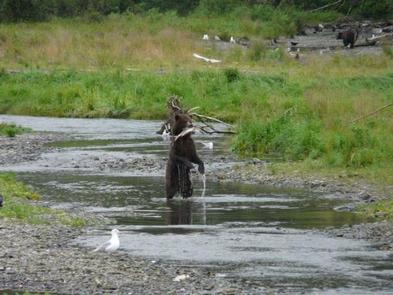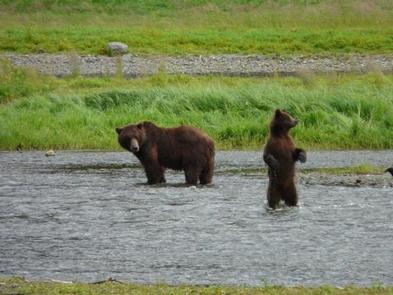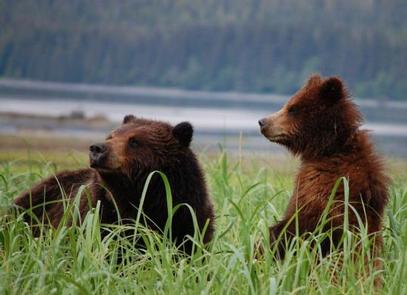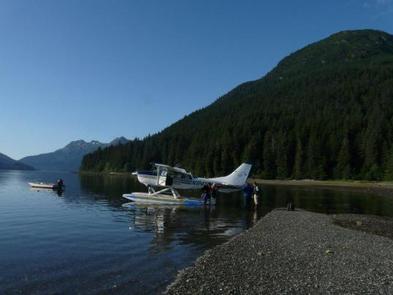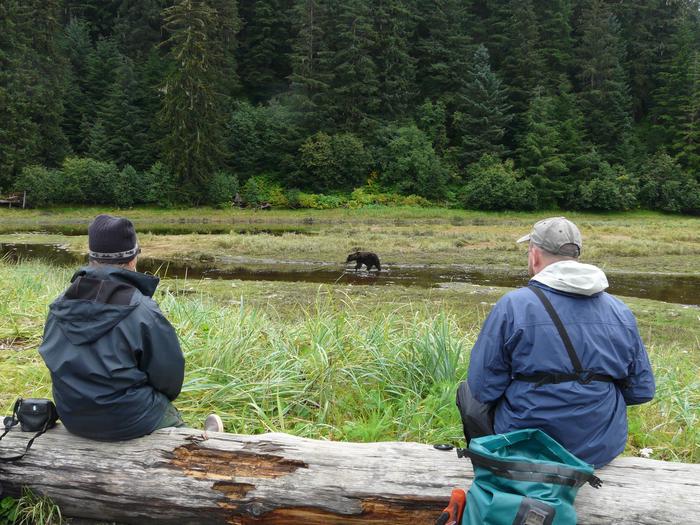Pack Creek Bear Viewing Area
- Part of
Amidst the Alaskan Brown Bear
Enter the world of the coastal brown bear at the Pack Creek Bear Viewing Area on Admiralty Island, just a short 30-minute float plane ride from Juneau, Alaska. View these magnificent creatures in their natural habitat as they eat sedges and clams, play with their siblings, sleep, and fish for salmon.
Admiralty Island is at the center of Southeast Alaska's Tongass National Forest. The native Tlingit people call this place "Kootznoowoo" (from Xutsnoowú) meaning “fortress of the bears”. Containing over a million acres, its gentle mountain slopes and steady precipitation create a lush temperate rainforest and rich salmon spawning habitat making it an ideal home for the Alaskan brown bear. The island boasts one of the healthiest brown bear populations in the world -- around 1500 of them roam the island anywhere from its rugged alpine ridgelines to expansive marine estuaries. These coastal brown bears are akin to the "grizzlies" of the interior and are easily distinguished by a large hump of muscle over their shoulders, as well as a dish-shaped face.
The Nature of Pack Creek
From its headwaters 4000 feet above sea level, Pack Creek descends rapidly to the ocean salt water in upper Seymour Canal. Sediments are deposited at its mouth, creating a 400-acre estuary. These mudflats are an important source of food for many animals, including bears, which feed on clams, shellfish, and other creatures throughout the summer.
Bears gather here when the pink and chum salmon return to spawn in their natal stream. Like all things wild, it is not possible to know exactly when the salmon runs begin in Pack Creek as it is part of an intricate and dynamic system. In the last several years bears begin catching fish between the second and last week of July.
The Pack Creek ecosystem is home to more than just brown bears. The wilderness world of Pack Creek provides endless opportunities for inspiration and discovery. Admiralty Island contains the highest concentration of bald eagle nests in the world. Other birds, mammals, and marine life thrive in this rich ecosystem of old-growth rainforest and coastal marine environments.
Recreation
The Pack Creek Bear Viewing Area is within a federally designated Wilderness Area. This means there is limited development on site. Pack Creek has no facilities. There are two primary areas to view bears at Pack Creek. You can choose to walk along the beach to the viewing spit or hike one mile to an observation tower where you can view bears from above.
No humans or bears have ever been harmed at Pack Creek. To maintain this record and perpetuate quality bear viewing opportunities, all visitors must strictly follow Pack Creek protocols. These behavior protocols perpetuate patterns that maintain a safe and stress-free environment for the bears who make Pack Creek their home and create a unique opportunity for visitors to witness bears in their natural environment, unbothered by human presence.
Permit & Season Information
This permit allows the permit holder to visit Pack Creek Bear Viewing Area 9 a.m. to 9 p.m. April 1st to September 30th. All public permits go on sale February 1st. Permits need to be purchased online prior to arrival at Pack Creek.
Permits are limited: only 24 visitors are allowed per day between April 1st and September 30th. Half of the 24 permits available are for public purchase, and the other half are reserved for commercial companies to provide guided tours to Pack Creek. These numbers are averaged weekly.
Permits are not required between October 1st to March 31st.
Important Dates
| Dates | Information |
|---|---|
| April 1, 2025 - September 30, 2025 | A permit is required to visit Pack Creek Bear Viewing Area. |
| April 1, 2025 - September 30, 2025 | Quota is limited to 24 visitors a day. |
| February 1, 2025 | Permits go on sale for April 1– September 30 of current year. |
| October 1, 2025 - March 31, 2026 | No permits are required. |
How Does the Quota Work for this Permit?
The maximum group size is 12 persons.
The quota for this permit is measured by maximum number of visitors. A maximum of 24 people per day can visit from April 1st through September 30th.
Of the 24 visitor permits allowed per day during the peak season, half are available for public purchase (averaged weekly). The other half are for commercial guiding companies for those visitors that prefer the added services of a guide.
